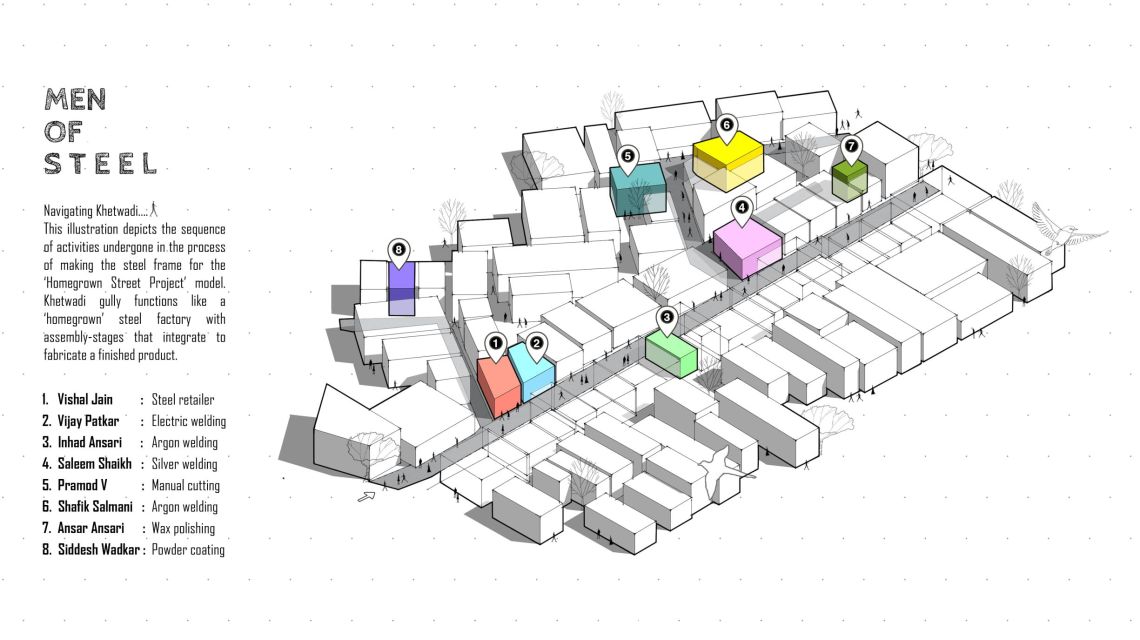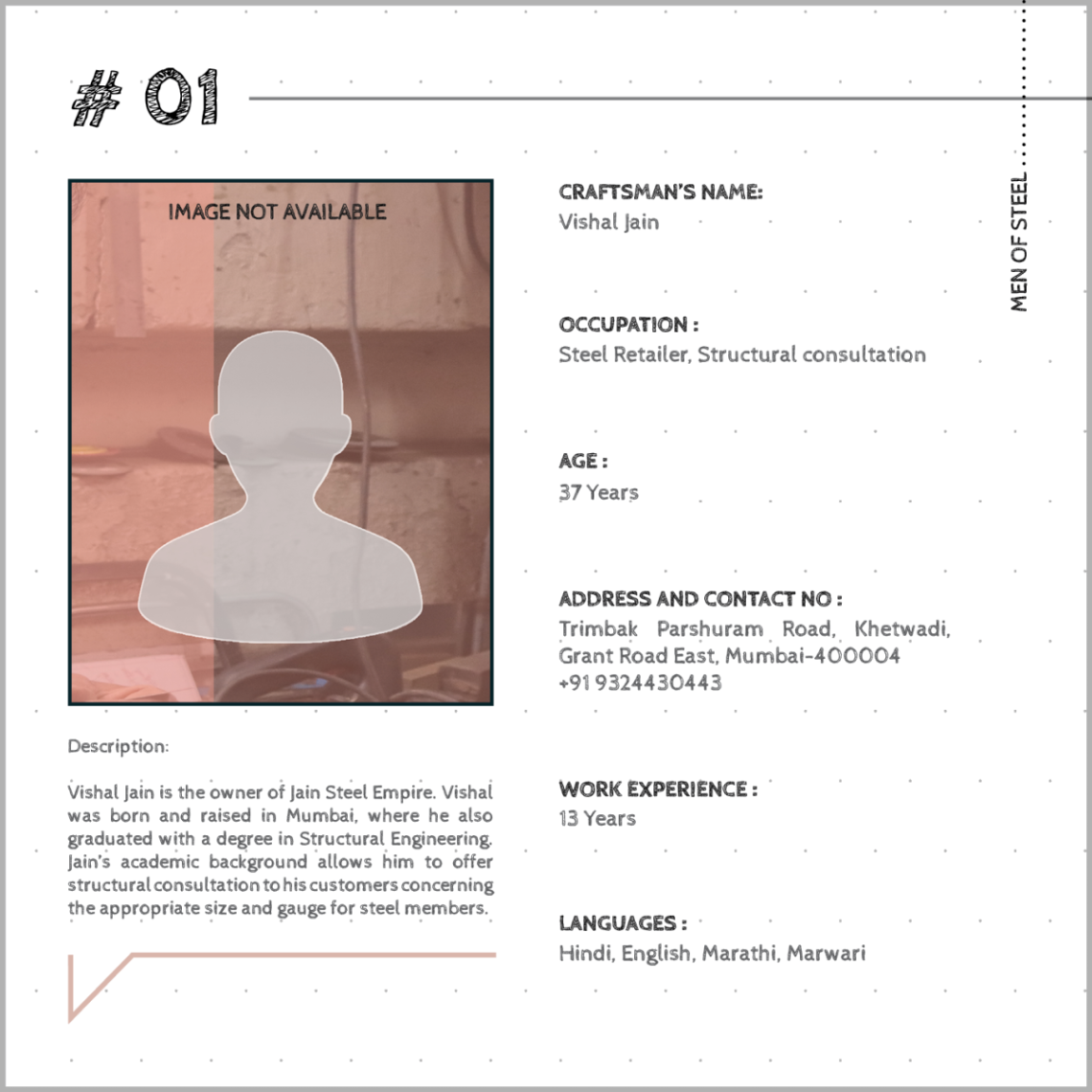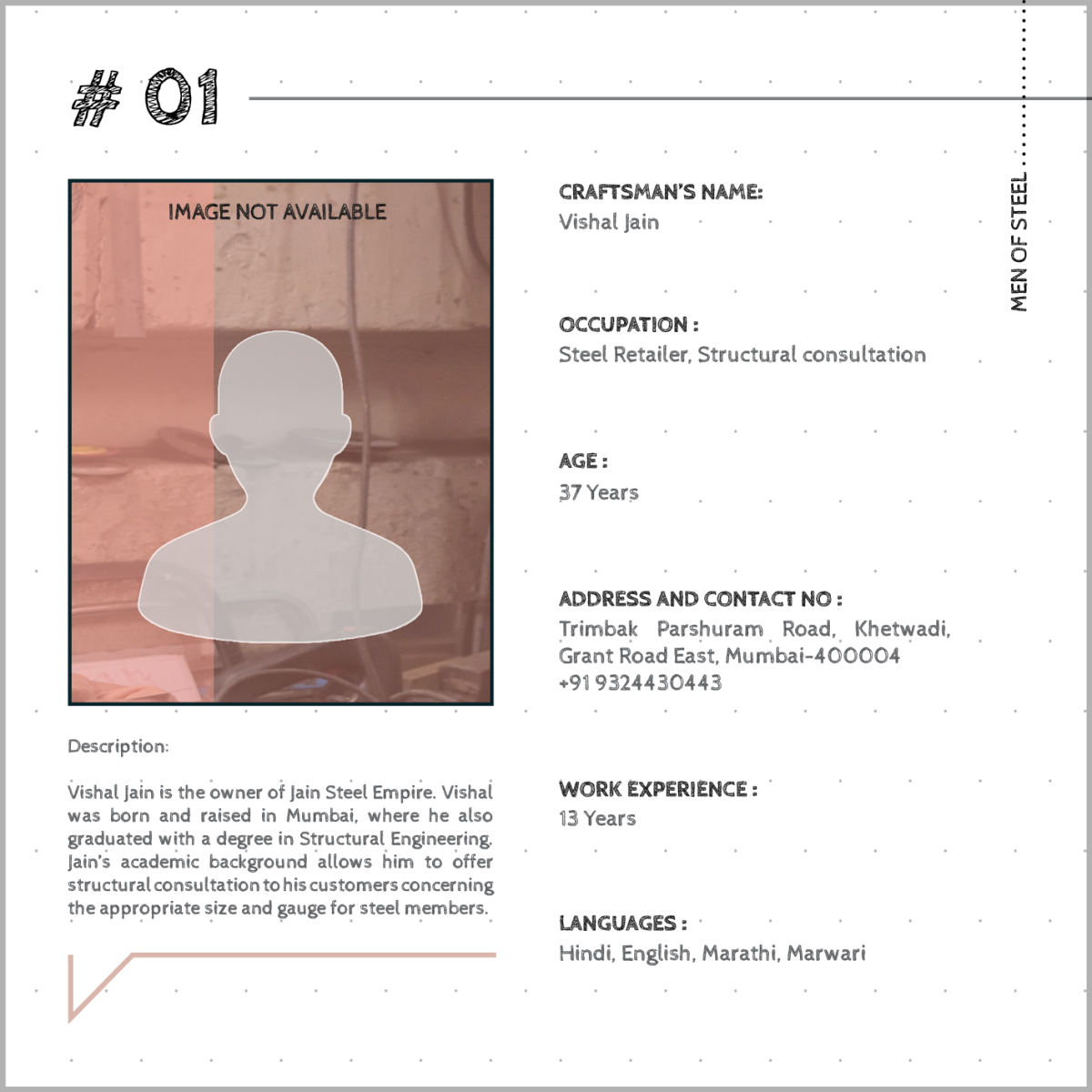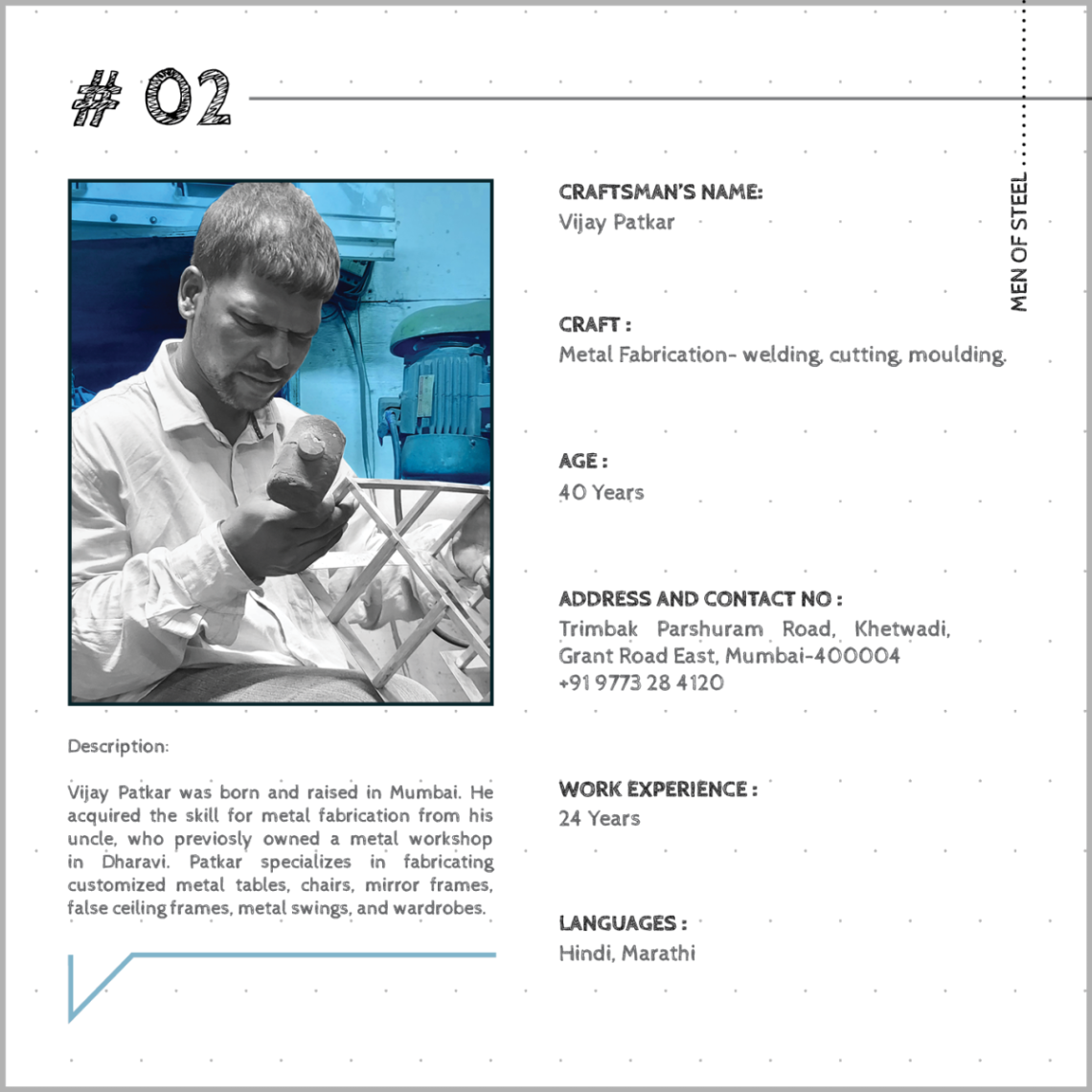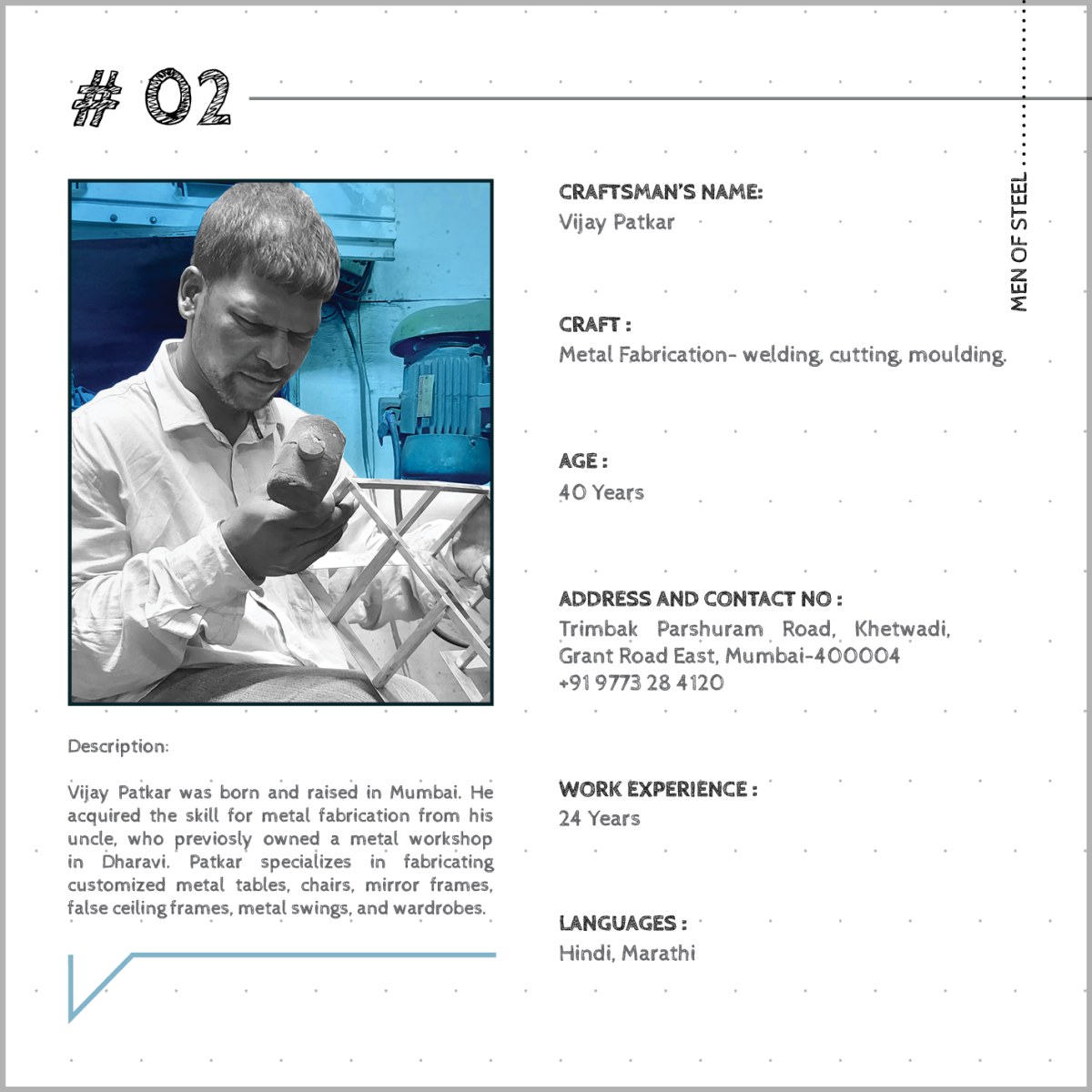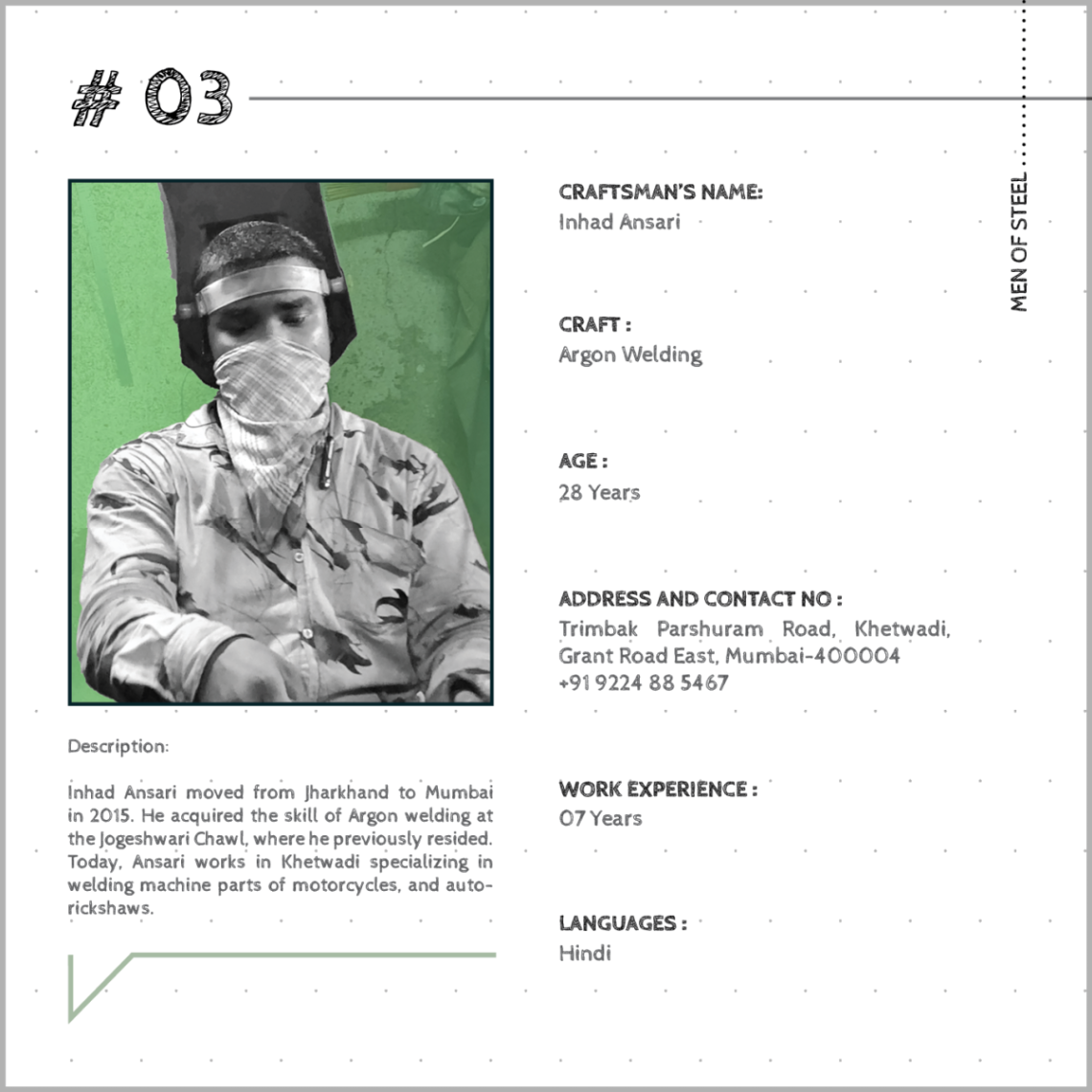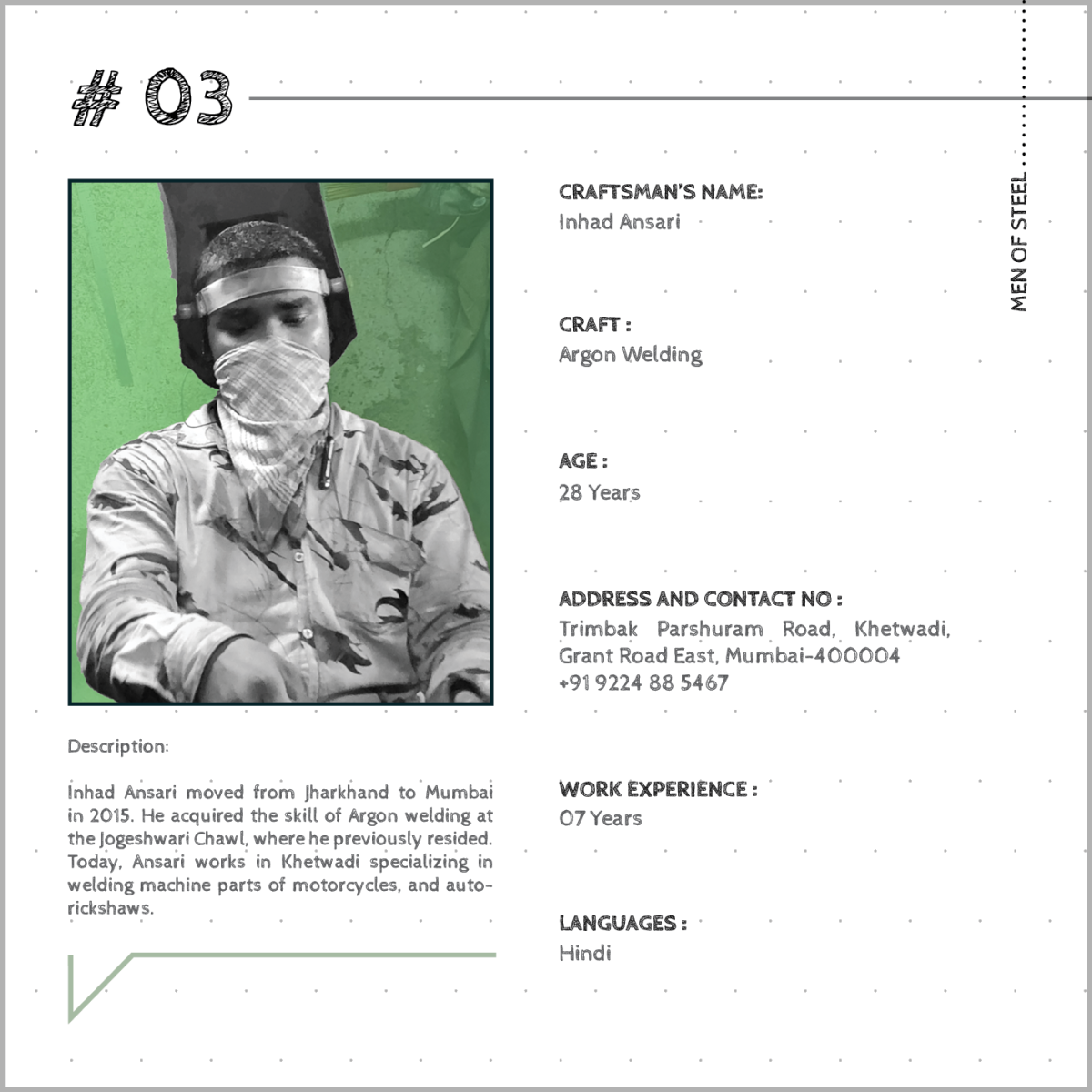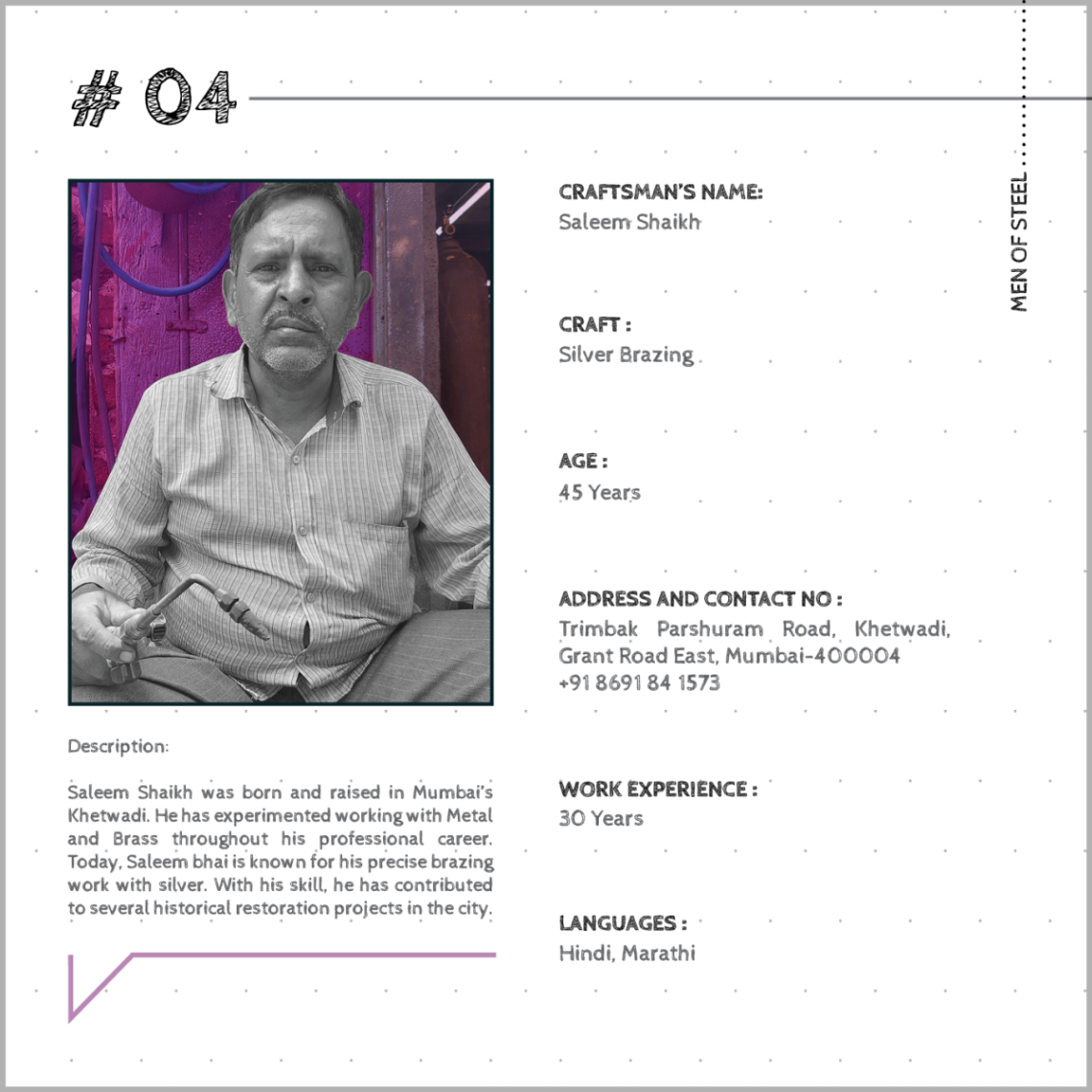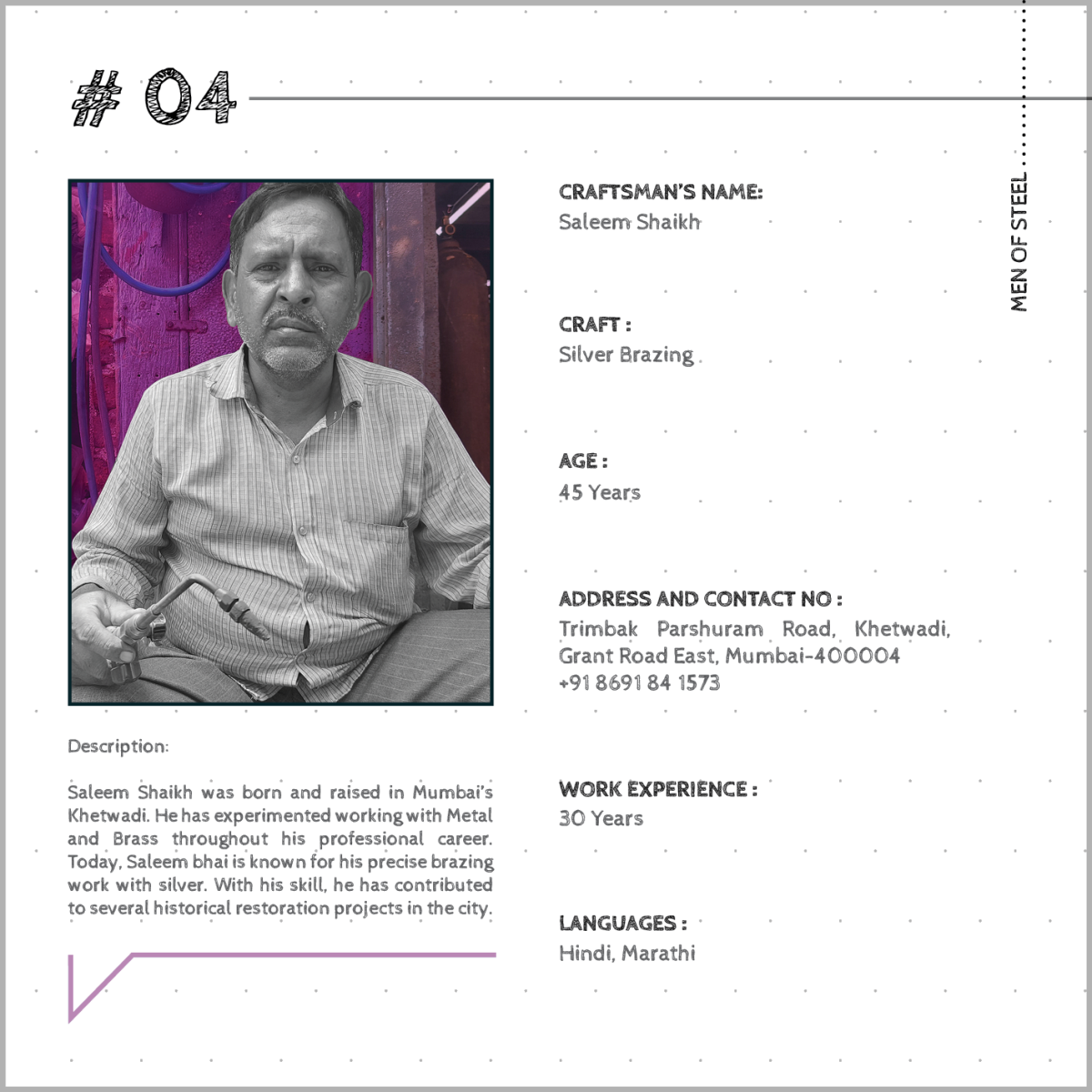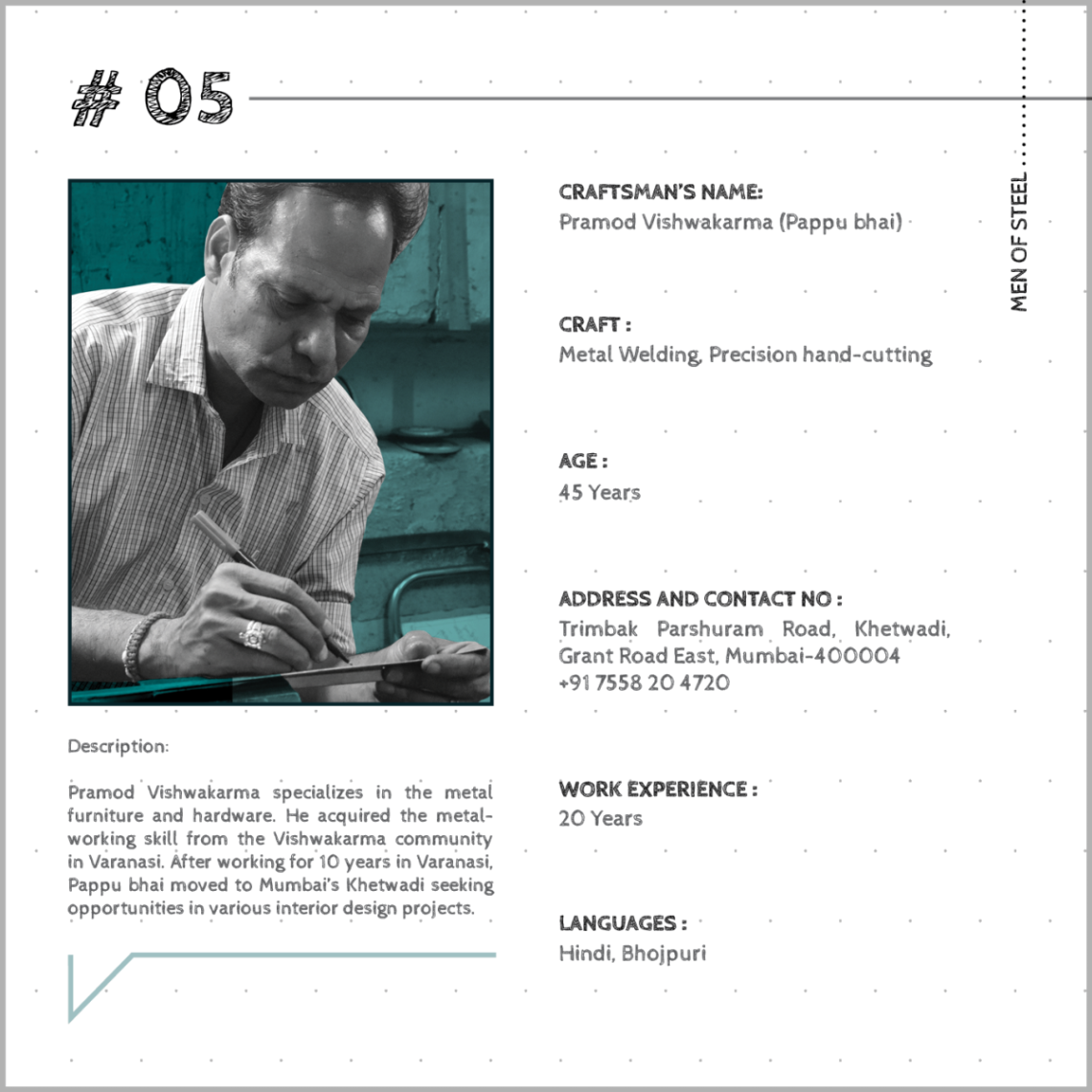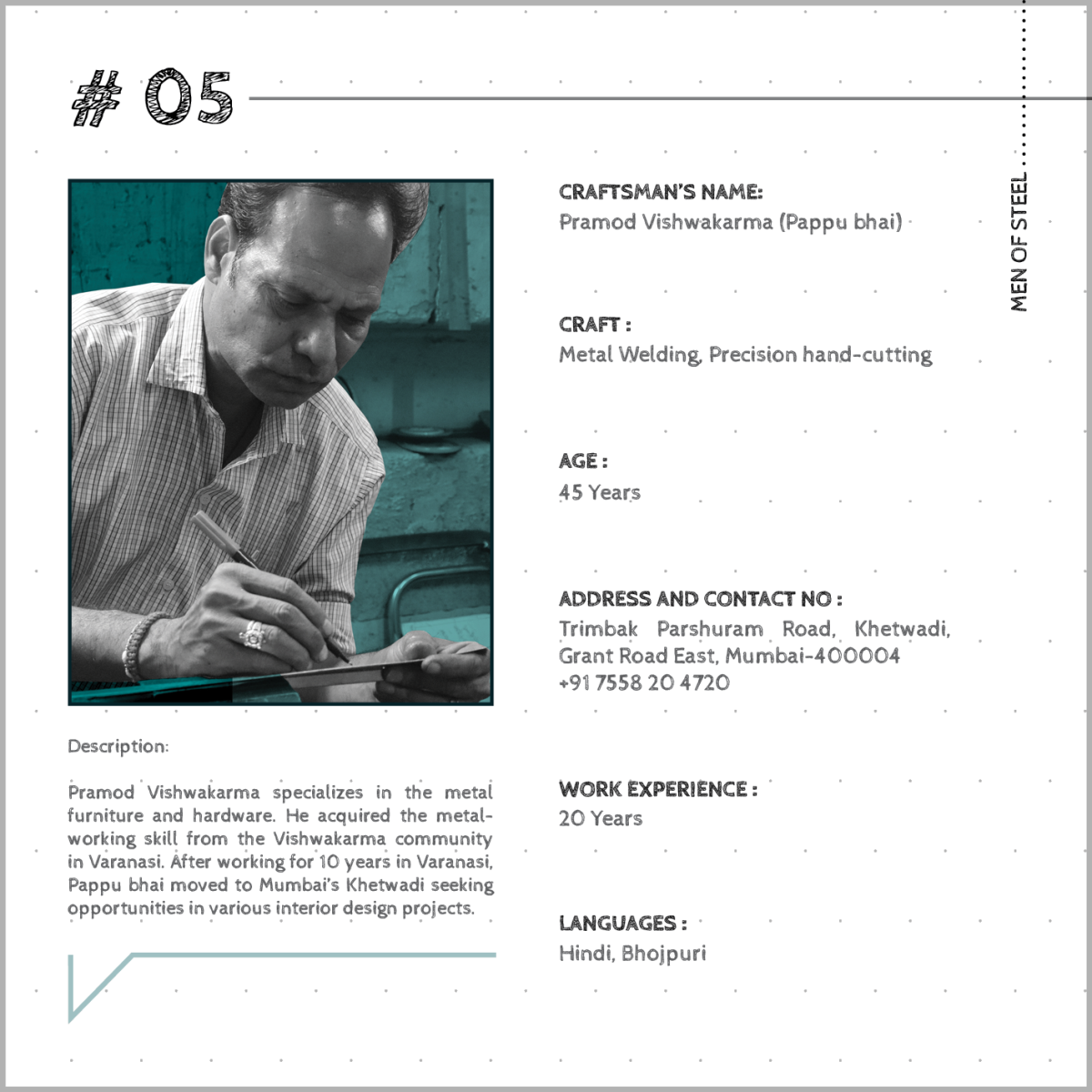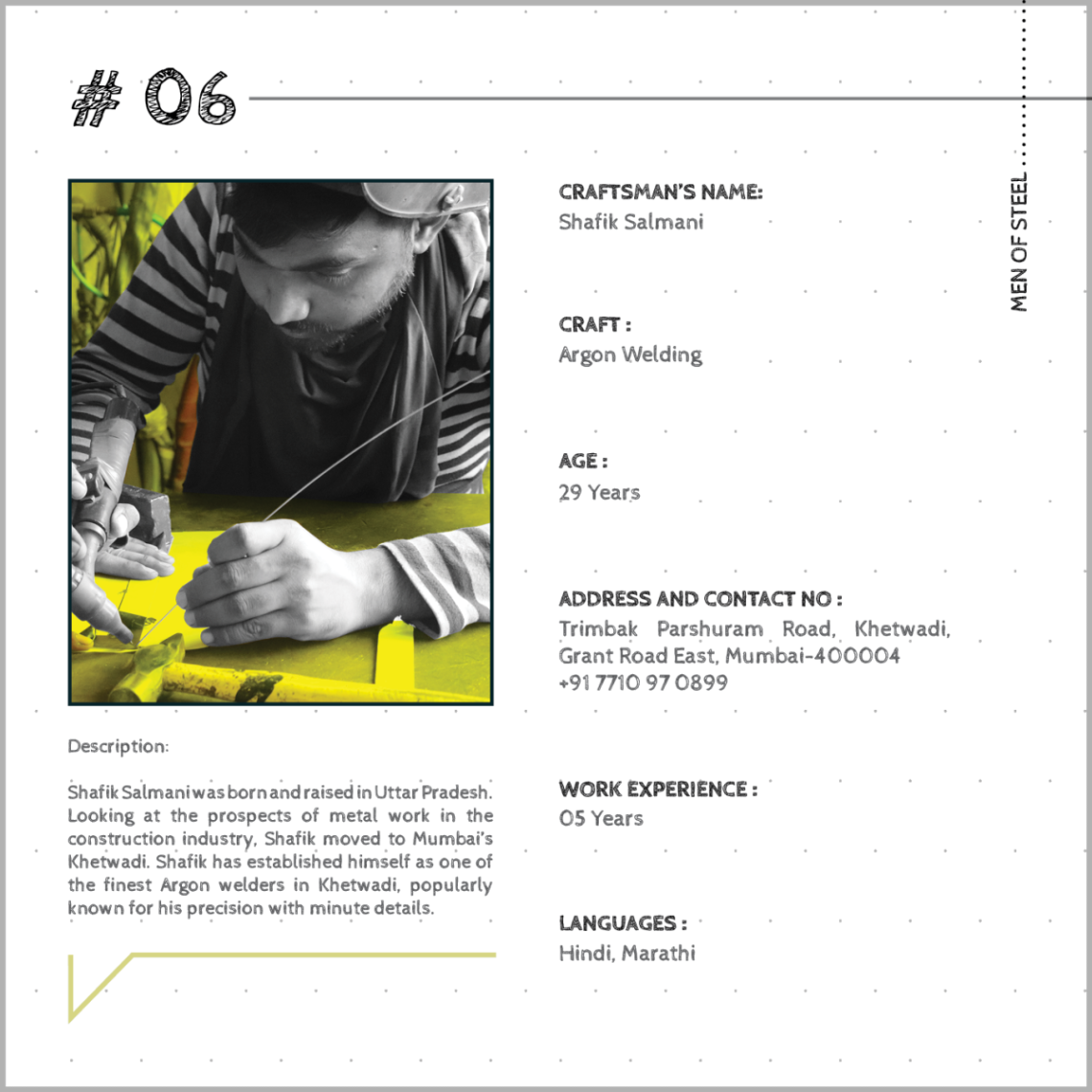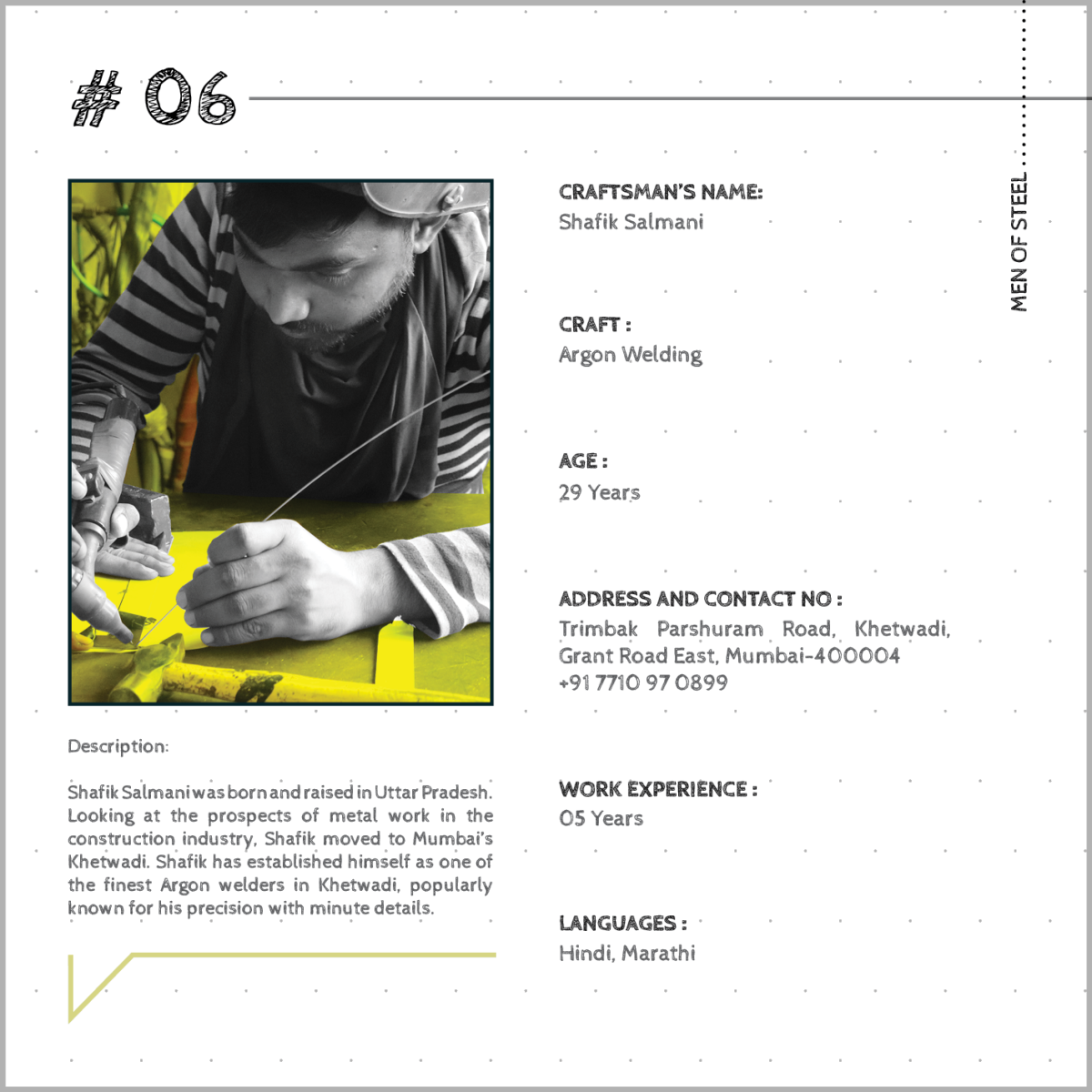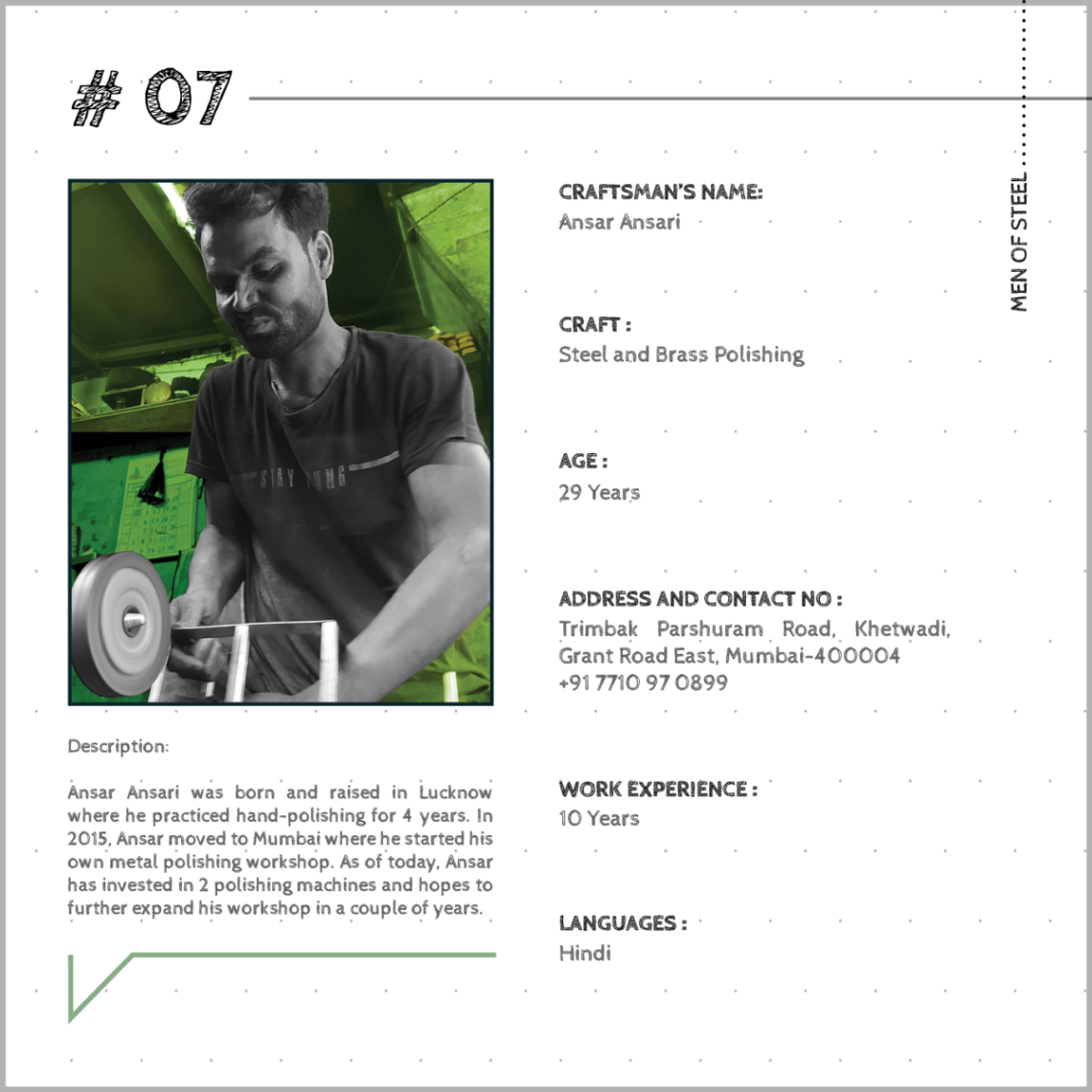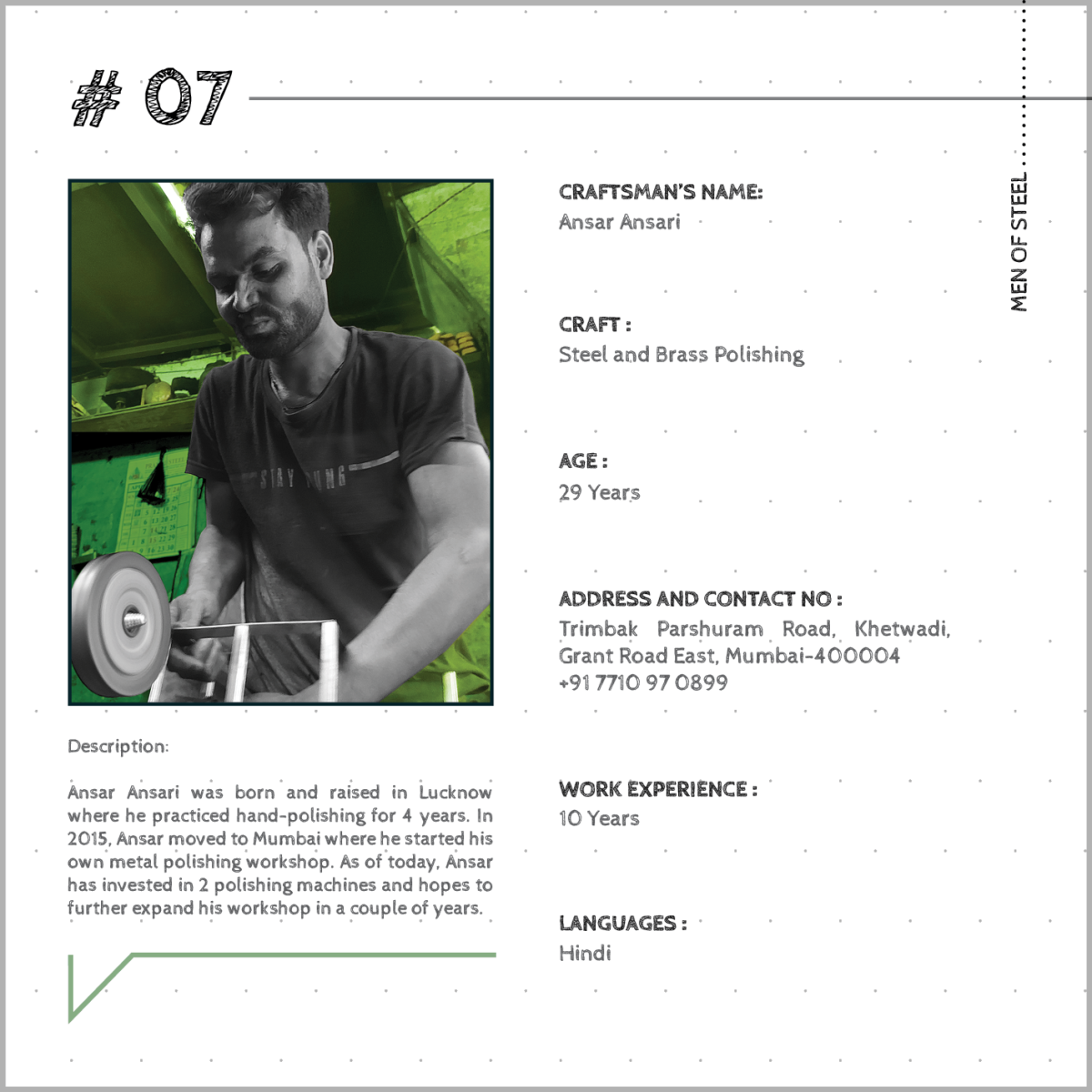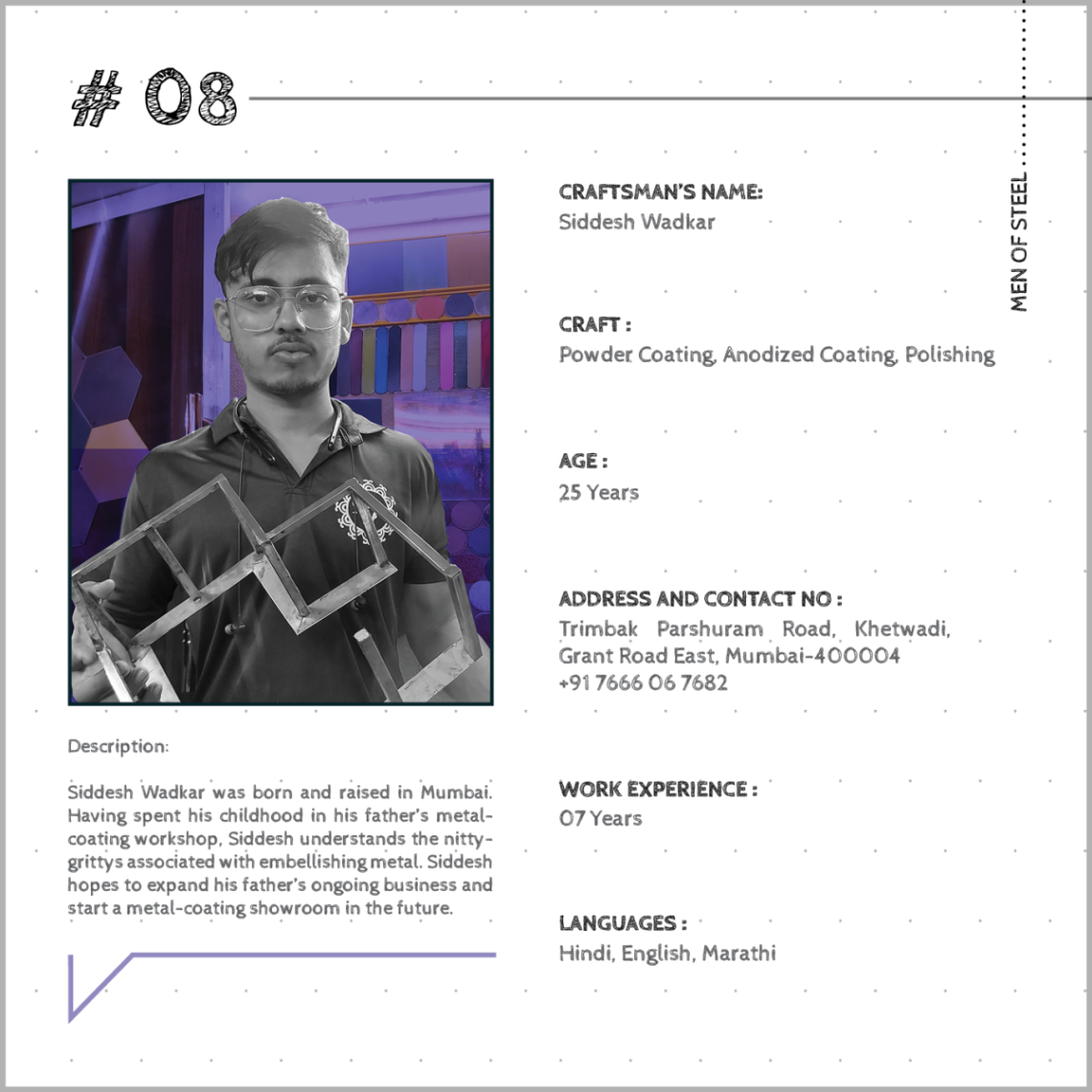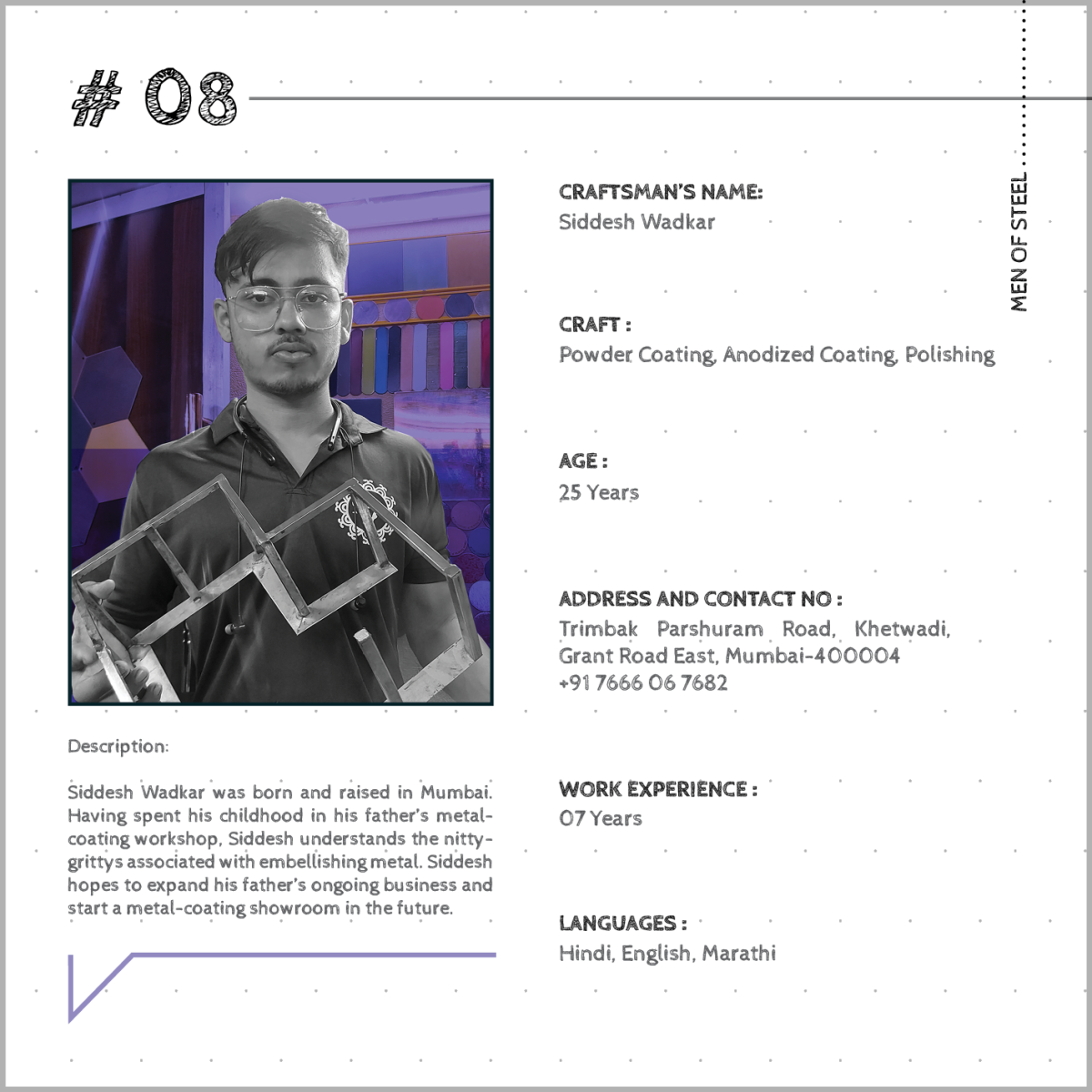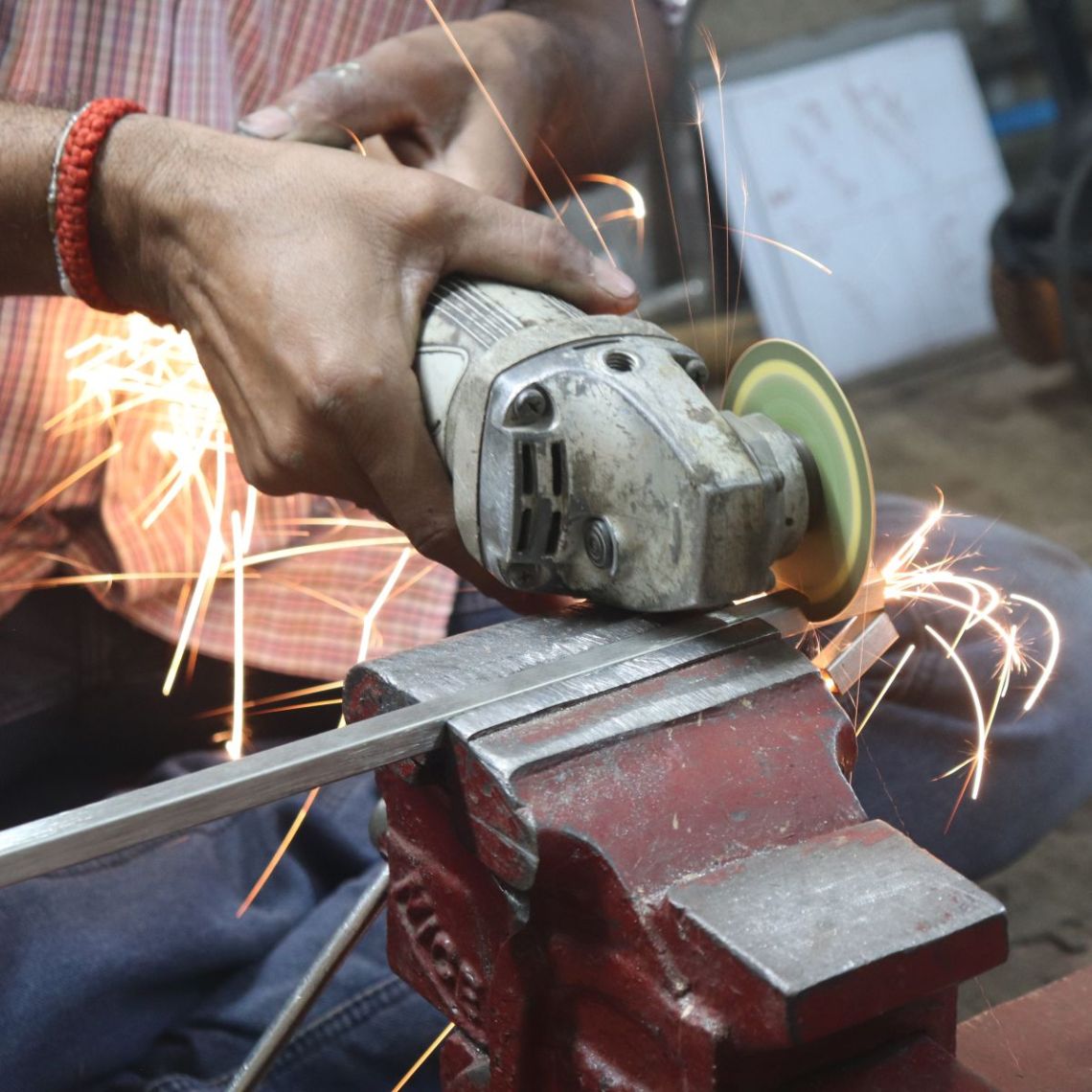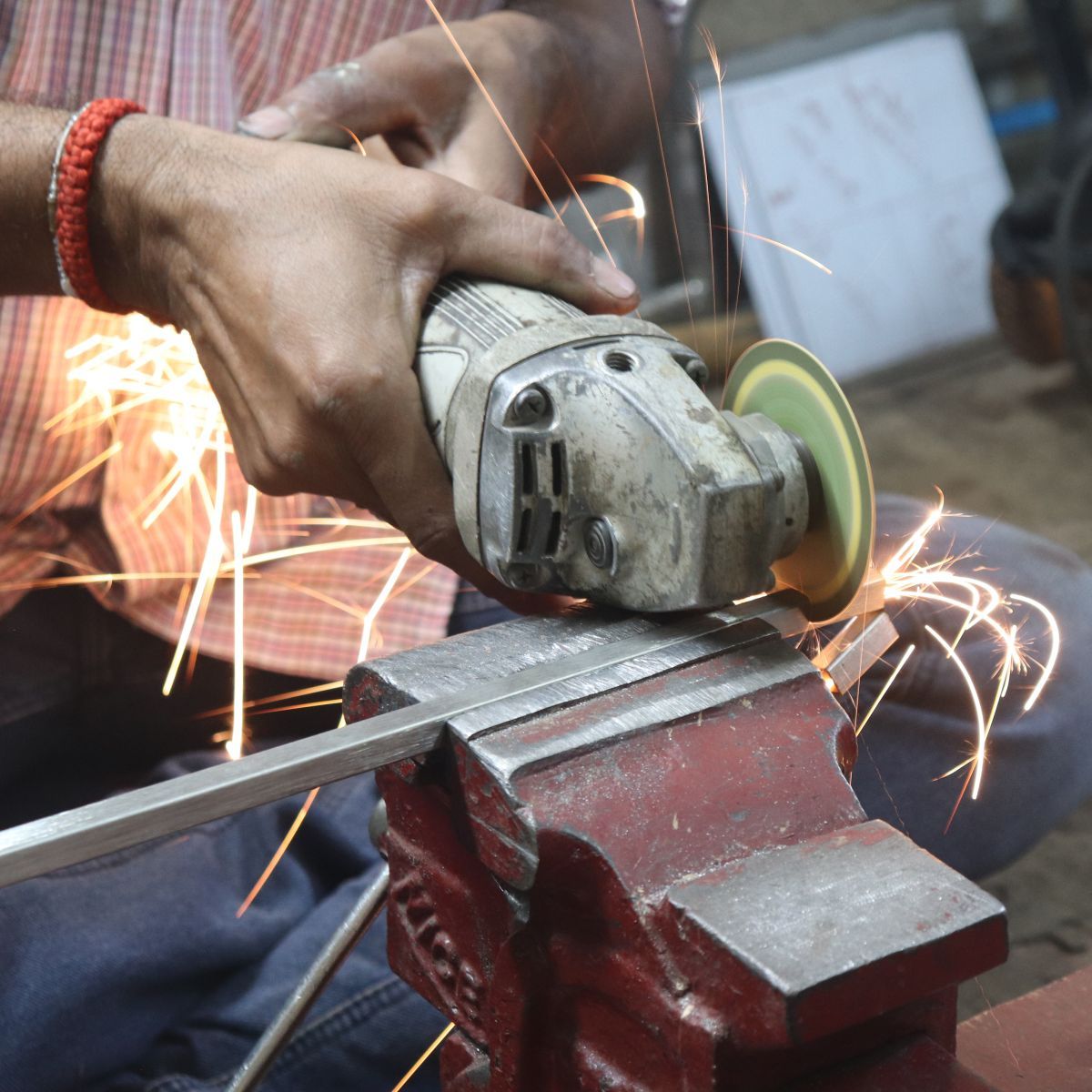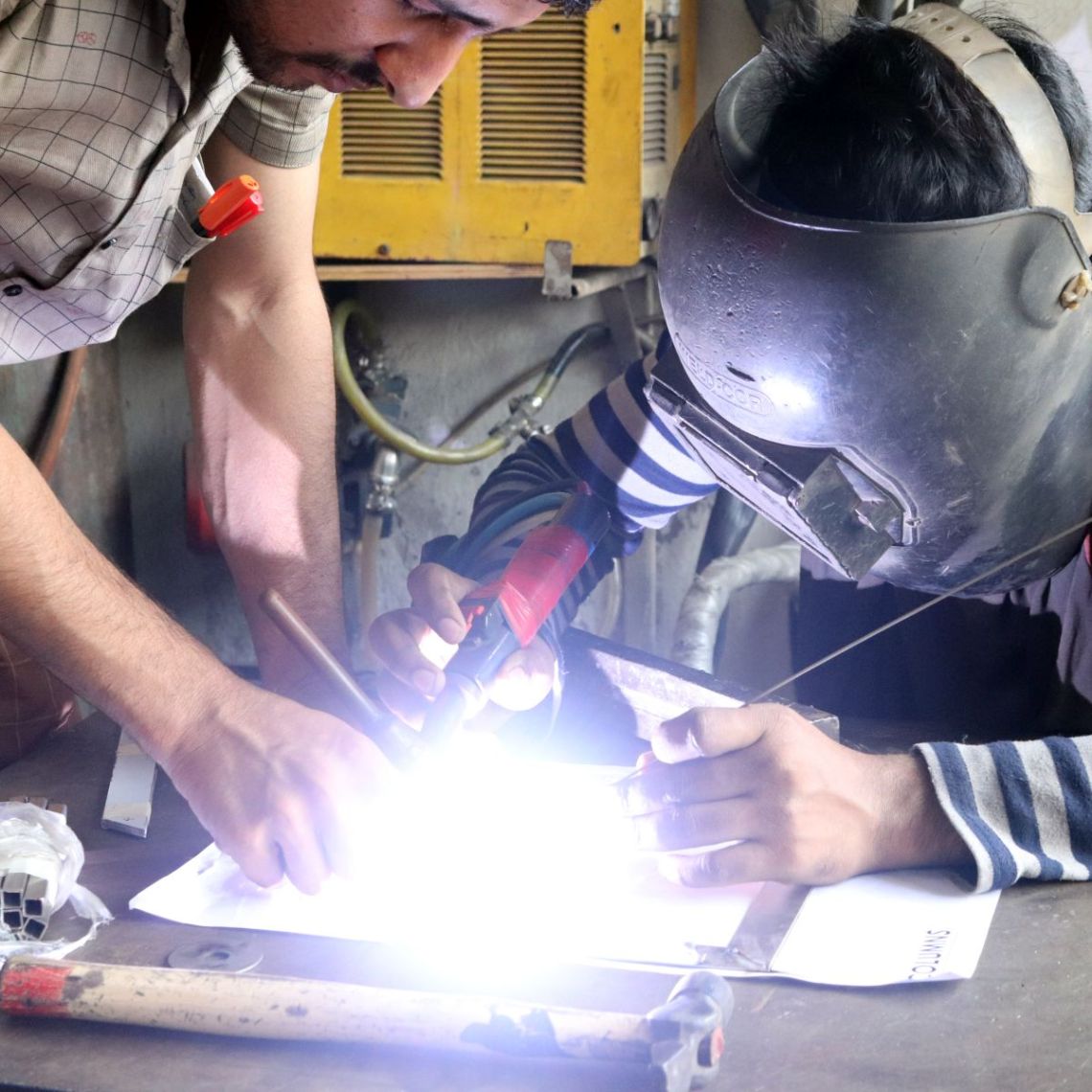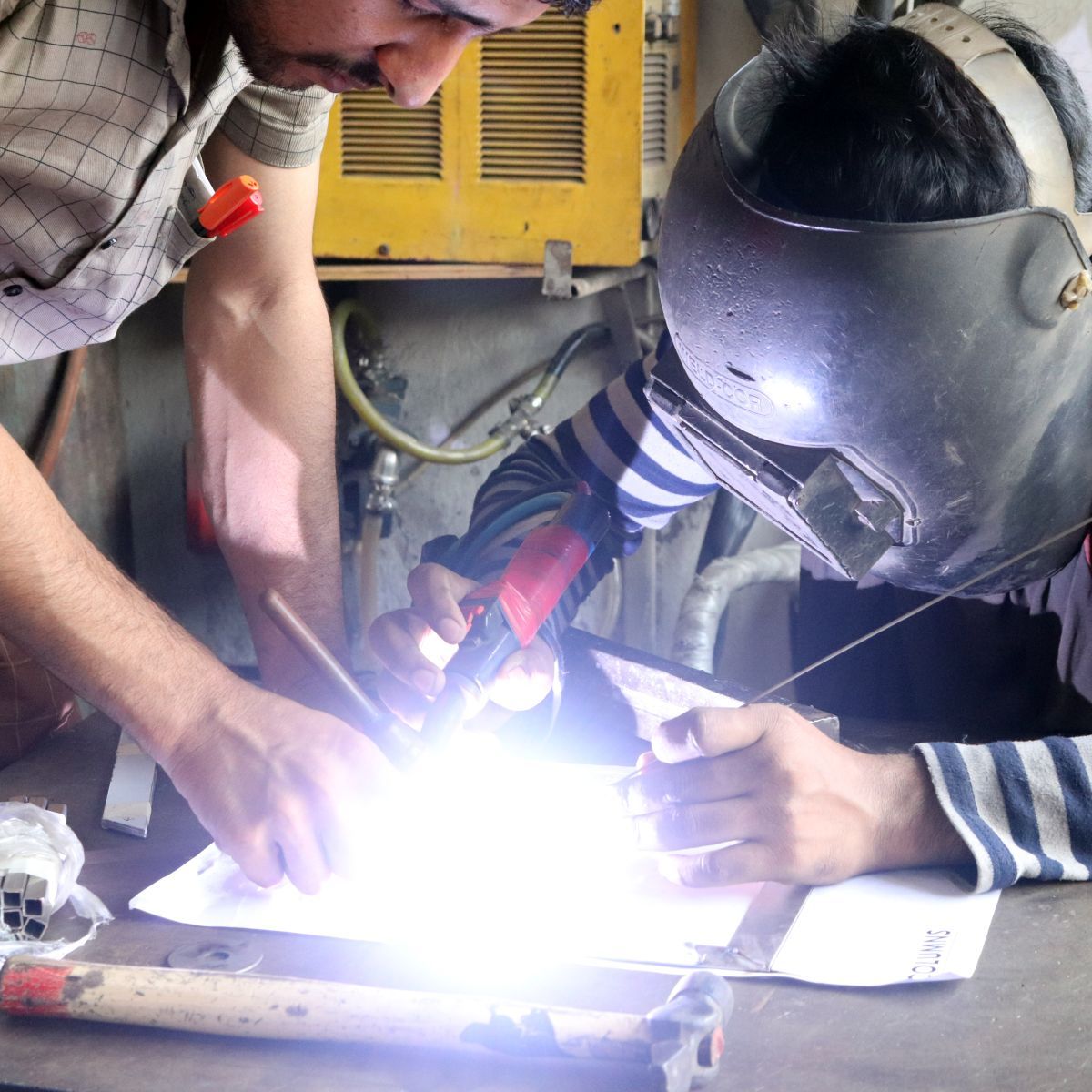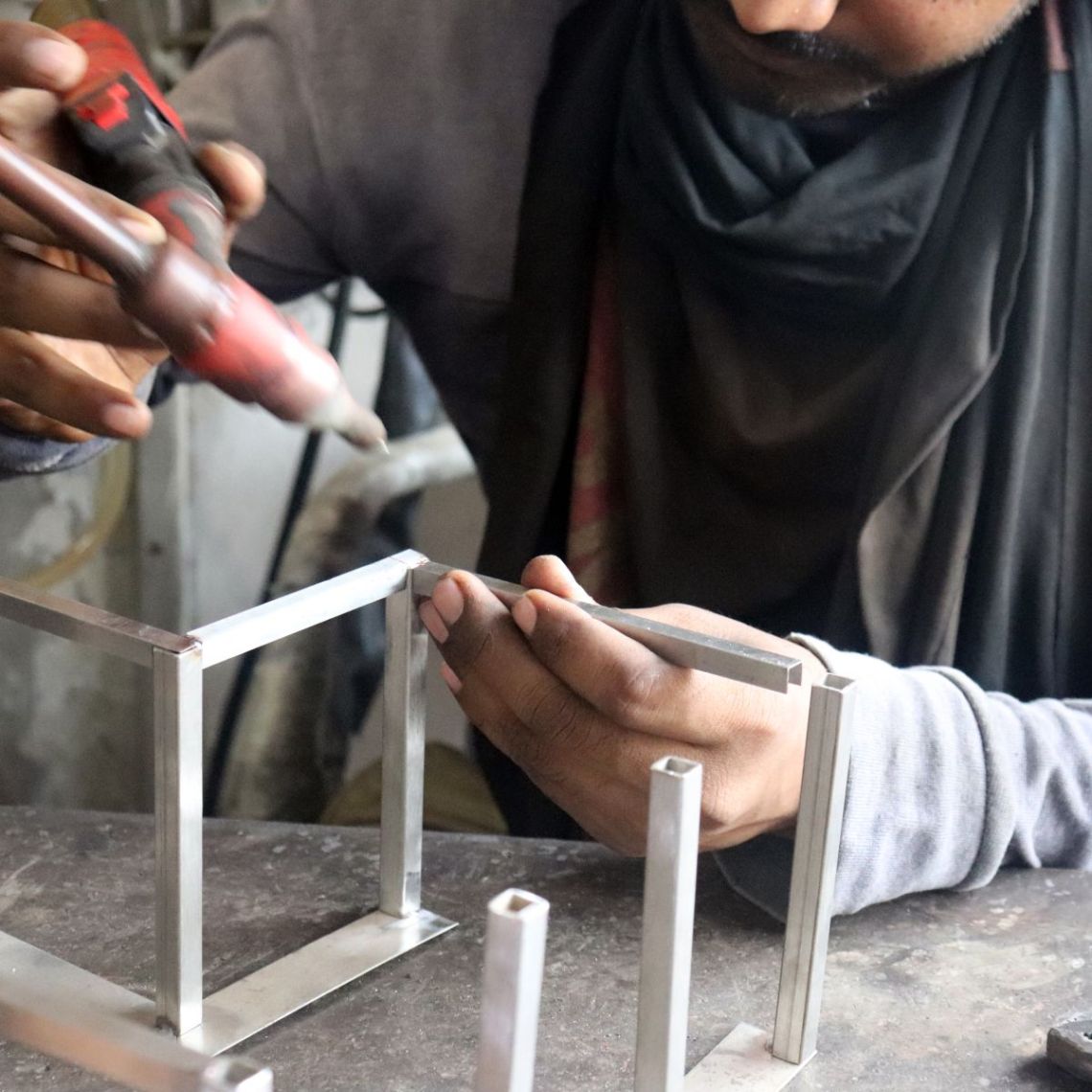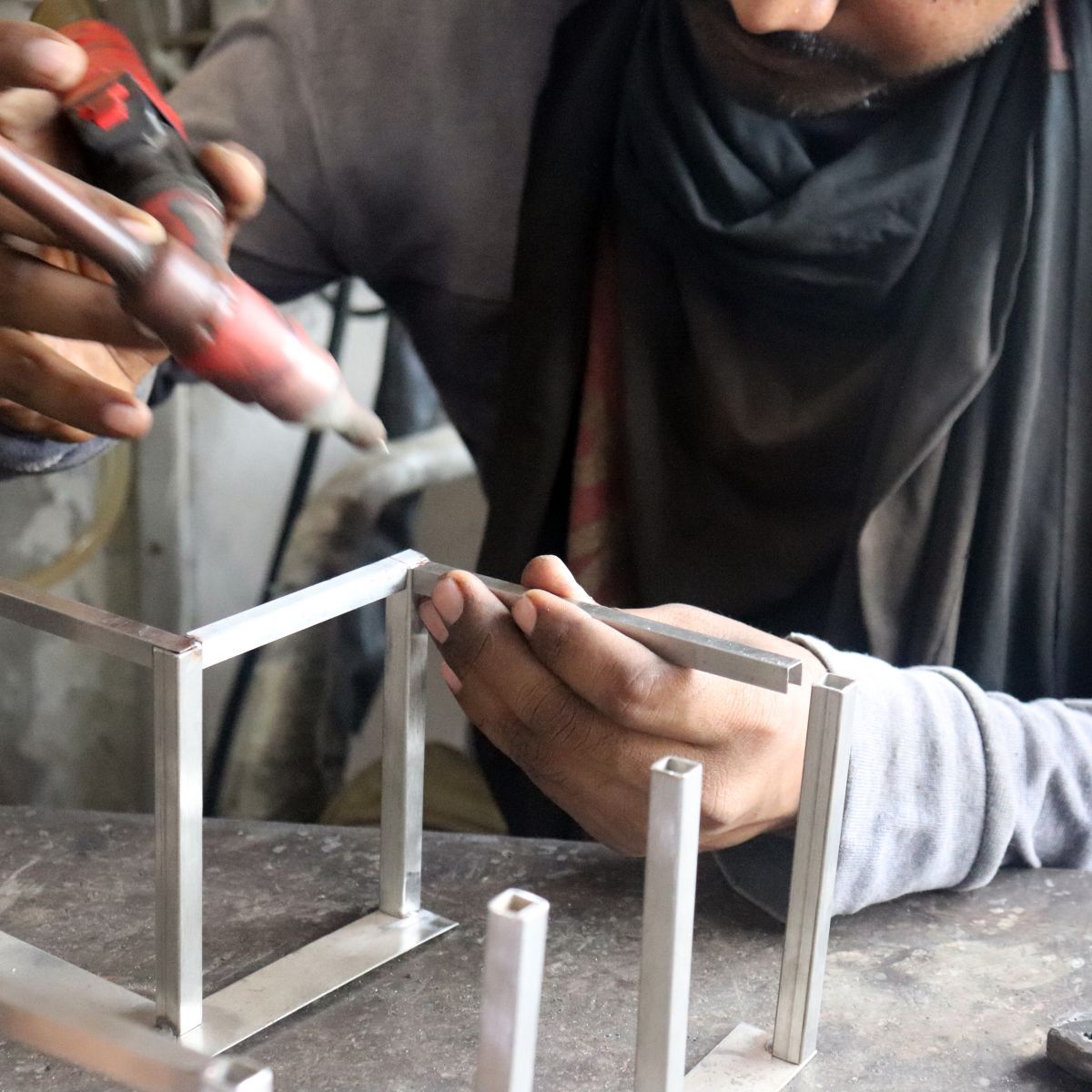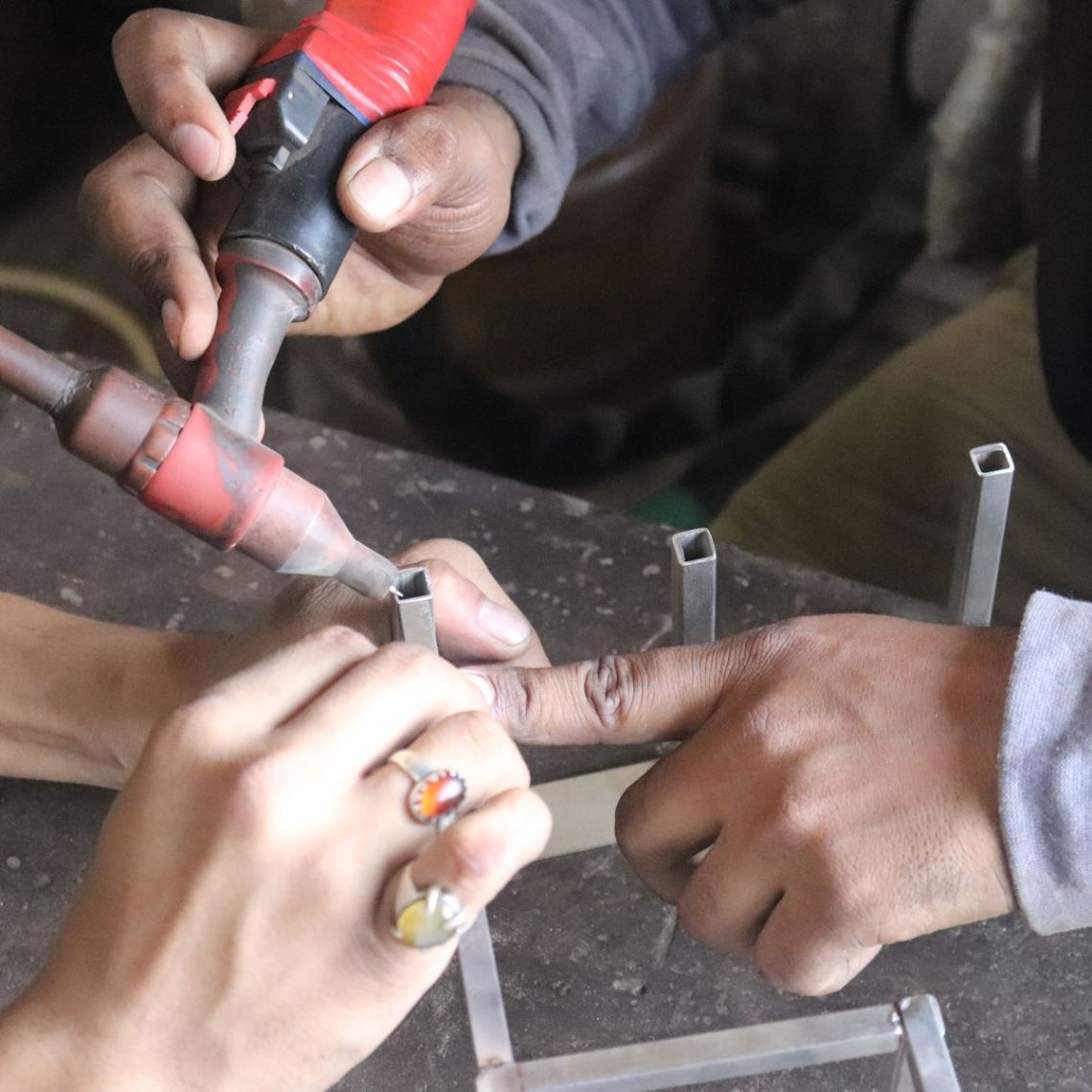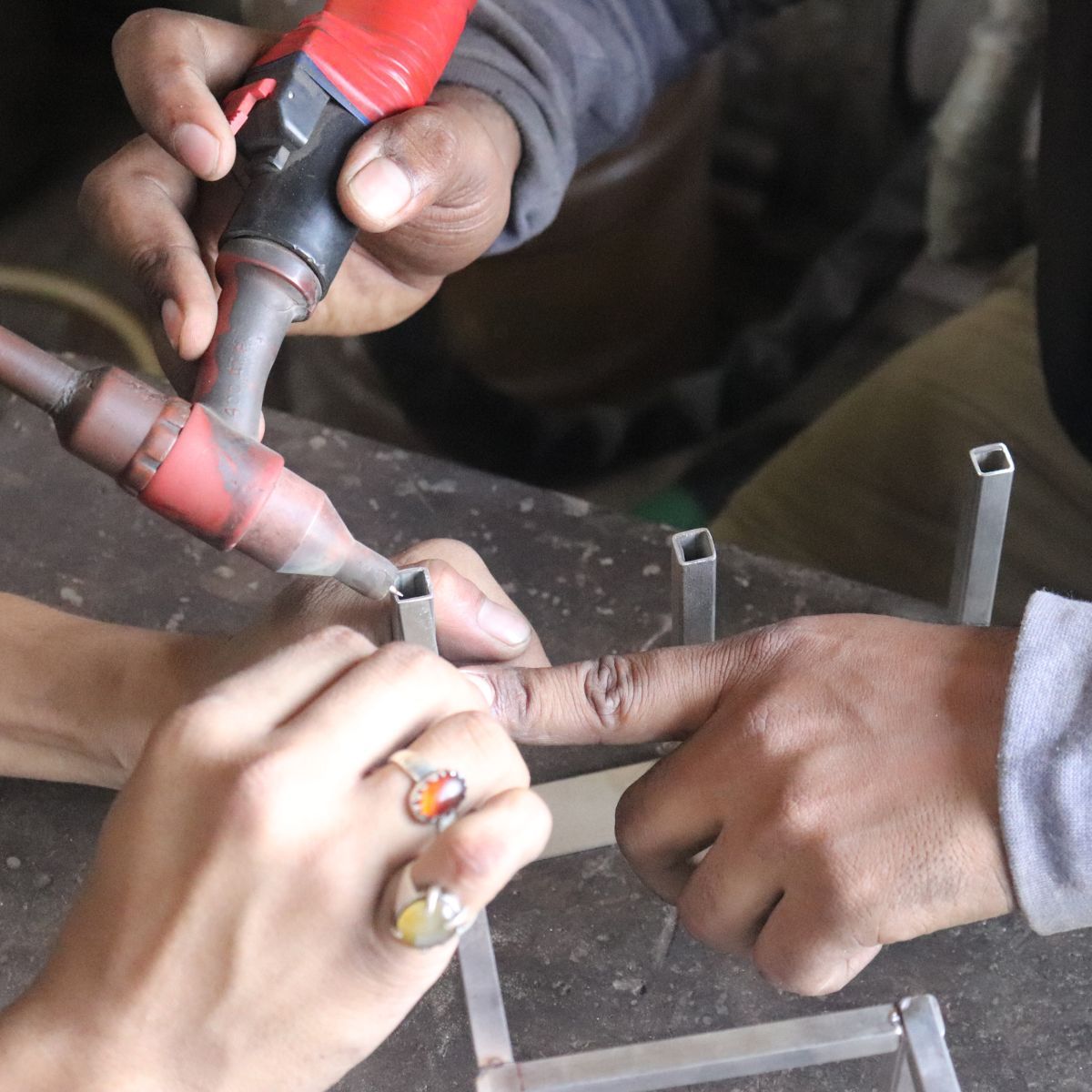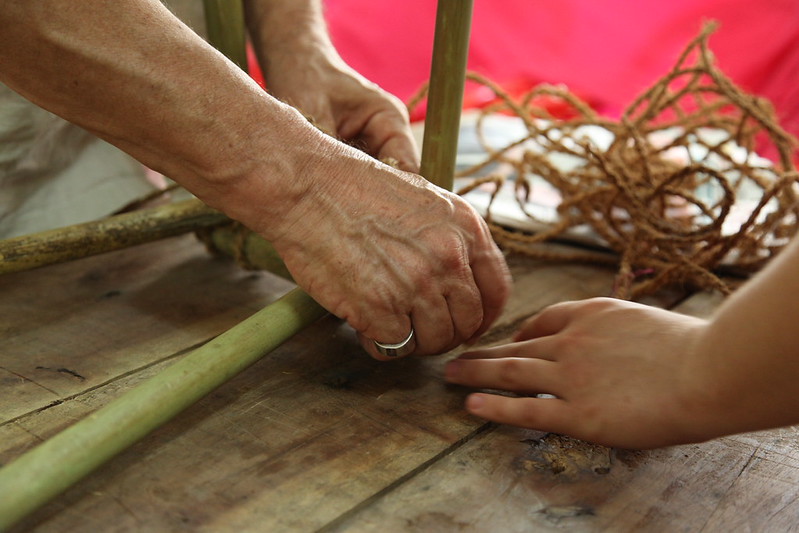Men of Steel
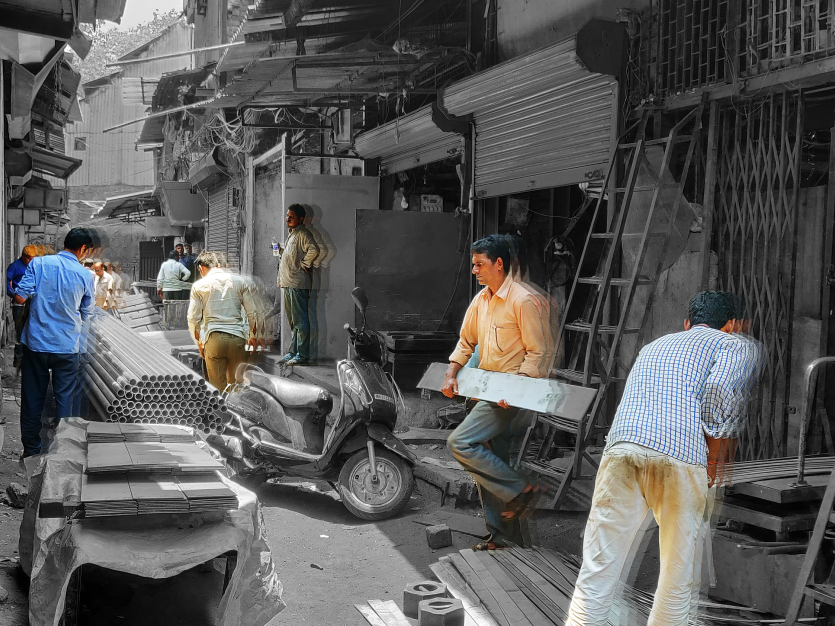
Men of Steel
“A handcart carrying steel rods accidentally blocks a honking scooter, people dodge their way through the gully, a hammer thunders periodically as it strikes the steel, the machine-grinder incessantly buzzes at the far-end as it splits steel into pieces, the back and forth motion of the hacksaw echoes a tune, the welding light flashes at street edges, a yell from here, a shout from there.”
The Khetwadi gully dramatically welcomes you into a world of chaos and commotion. The first impression that the setup offers is that of competition to acquire customers and a toned-down rivalry. However, at the core of this chaos lay a craft-oriented discipline that these shop-retailers and steel artisans harbour. Craftsmen of Khetwadi have moulded themselves to acquire distinct steel-oriented skill sets. These specific skill-sets of the artisans are often washed over by the fact that every shop owner has some relation to the material- Steel. However, the intricacies in steel fabrication and the means to achieve them are driven differently by each artisan. To that end, Khetwadi offers skills in argon welding, silver welding (brazing), electric welding, steel grinding, precision machine-cutting and manual-cutting, steel polishing, powder-coating and even laser and water-jet cutting. Interestingly, these individual crafts and their practitioners are well integrated with one another. Khetwadi gully functions like a ‘homegrown’ steel factory with assembly stages that individually contribute to a finished product.
Small workshops in Khetwadi, often unidentified, do the back-end work for small and large scale construction projects in the city. On one hand, steel assemblies for interior design projects, window grilles, steel staircases, metal swings, and hardware are in the making. On the other hand, structures of compound walls for city parks, beams and columns for building structures are customised in the same space. Each artisan brings a different skill to the table that ensures a fair distribution of work along the gully. In the case of multiple artisans practising similar work, there is enough work (orders) to keep each practice occupied.
In addition, artisans also adopt product-oriented skill-sets. Steel is transformed to become a well-furnished metal chair or a sturdy staircase depending on the speciality of each artisan. Making a metal staircase requires a spectrum of skills ranging from cutting, grinding, welding and fixing the staircase on the site. On the other hand, designing metal chairs requires a distinct understanding of ergonomics and the principles of furniture design.
Many artisans and metal fabricators guide the customers to each other in case the work profile falls out of their area of expertise. There is a collaborative effort made at every end to make sure that the output is as desired by the customer. This participatory approach that binds craftsmen together generates an innate collective intelligence within the community.
“Yeh mera kaam nahi hai. Electric me jal jayega. Tum Argon welding karao, Shafik bhai ke paas jao, teesre khambe ke paas milega.”
“This is not my work as electric welding will not give you the desired output. I suggest you go to Shafik bhai and get Argon welding done for this joinery detail. You will find him near the third lamp post.”
As part of our ongoing Homegrown Street project in Dharavi, one of the house models was brought to life by the steel artisans of Khetwadi. We would like to address the contribution and highlight the skills of the artisans that contributed their time and skills to our 1:25 scale model. The chain started with Vishal Jain, the owner of Jain Steel Emporium. Vishal introduced us to the various types of steel sections and corresponding characteristics for the model. He proactively involved himself in the model-making process, understood the building plan, referred to the digital 3D model and suggested appropriate steel sections to purchase. In addition, Vishal introduced us to Vijay Patkar, who helped us to create samples for the joinery detail of the steel frame. Along with Vijay bhai, Salim Shaikh assisted us with an alternative detail via brazing for the same joinery detail.
When it came to custom-cutting pieces for the model, Babloo bhai suggested we meet Promod Vishwakarma (Pappu bhai), who specialises in precise manual cutting for minute furniture details. We introduced Pappu bhai to the Homegrown Street Project and he was willing to be actively involved in the purpose of the project. Pappu bhai’s meticulous cutting assisted us to achieve the required joinery details for the steel model.
Once we had the custom pieces ready, we were led to Inhad Ansari who specialises in Argon welding. However, after assisting us with a part of our model, Inhad recommended us to visit Shafik bhai who he thought could do the job more precisely as he had a new Argon-weld machine. On learning that we had approached him on Inhad’s reference, Shafique instantly welcomed us to his workshop and curiously questioned our project. Shafik was quick to understand the structure of the model and the joinery details. Argon welding enabled us to have neater, and more controlled weld joints that were fairly easier to refine. During the welding process, Shafik suggested several improvisations concerning weld locations, gap-filling and stability of the steel structure. Eventually, Shafik led us to Ansar bhai’s workshop, who helped polish and refine the model. Lastly, we were suggested to get the model powder coated to achieve a seamless finish. To that end, Salman bhai introduced us to Siddesh Wadkar, who provided us with multiple coating options for our steel frame- rose gold, mirror, matte, copper and gold finish.
Looking back, we realise the contribution of multiple artisans and their respective skills that went into the making of our 1’ x 1’ x 4’ model. Through the Homegrown Street Project, we also aim at highlighting the idea of collective growth through collaboration. We acknowledge how each artisan at Khetwadi individually contributes a ‘part’ in the efficient functioning of a larger whole. As observed in Dharavi, an innate sense of interdependence preserves the long-existing sense of reliability associated with Khetwadi. With the deep-rootedness in one’s craft and mutual respect for other craftsmen, The ‘Khetwadi Collective’ is a learning example of collective intelligence that facilitates individual and socio-economic growth.
